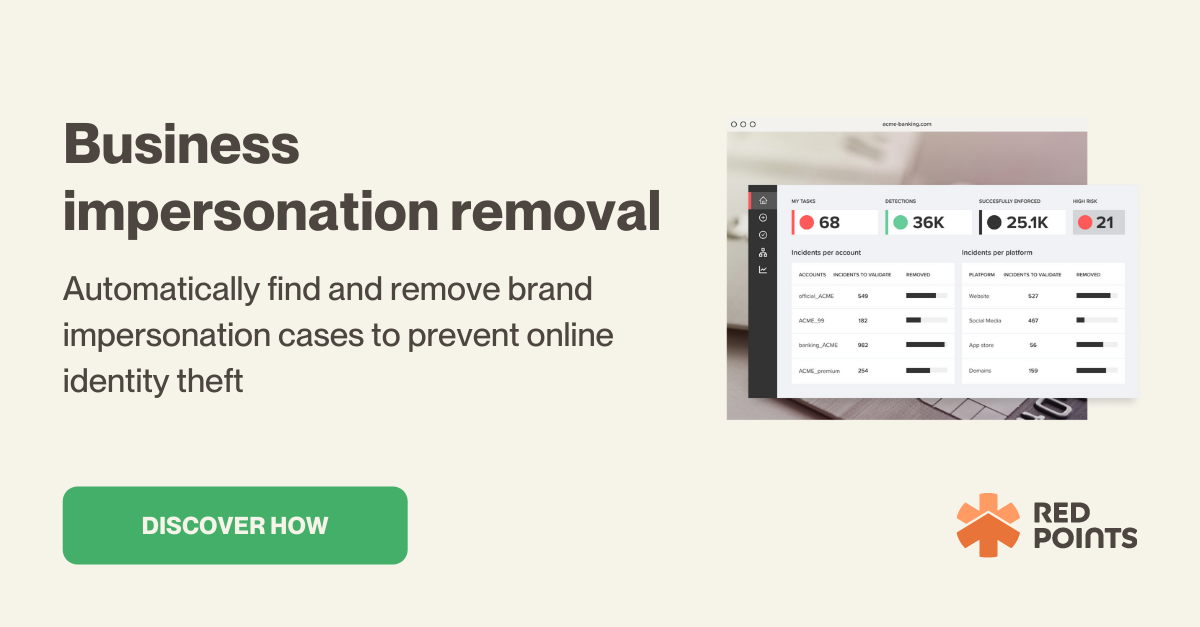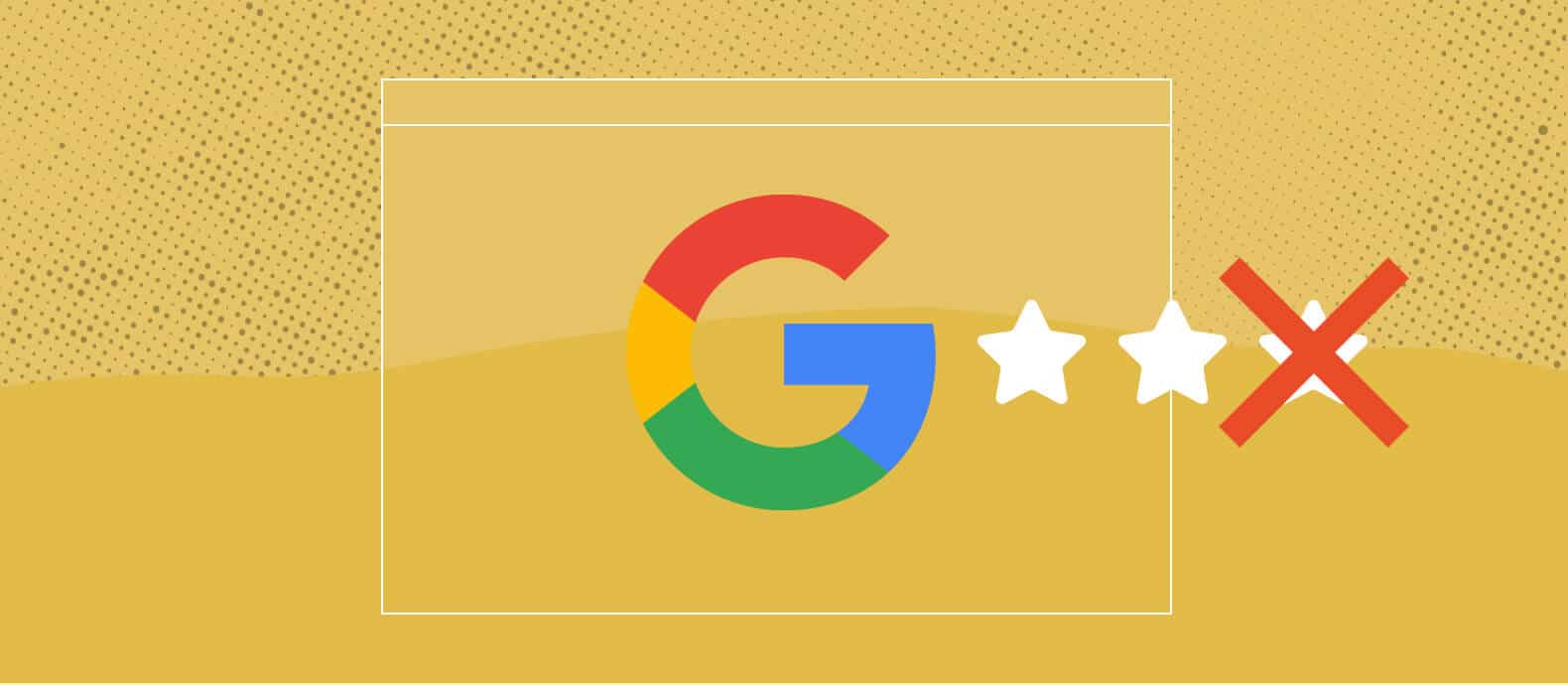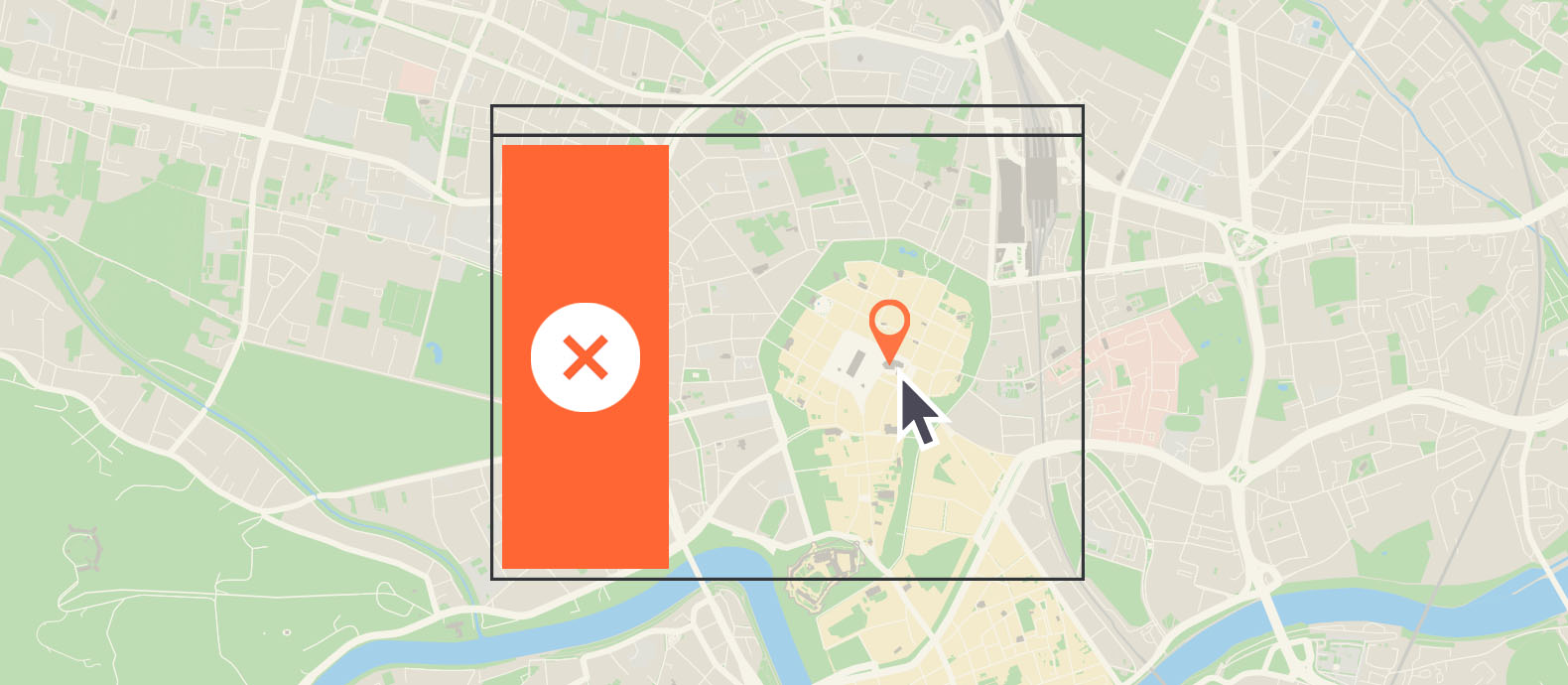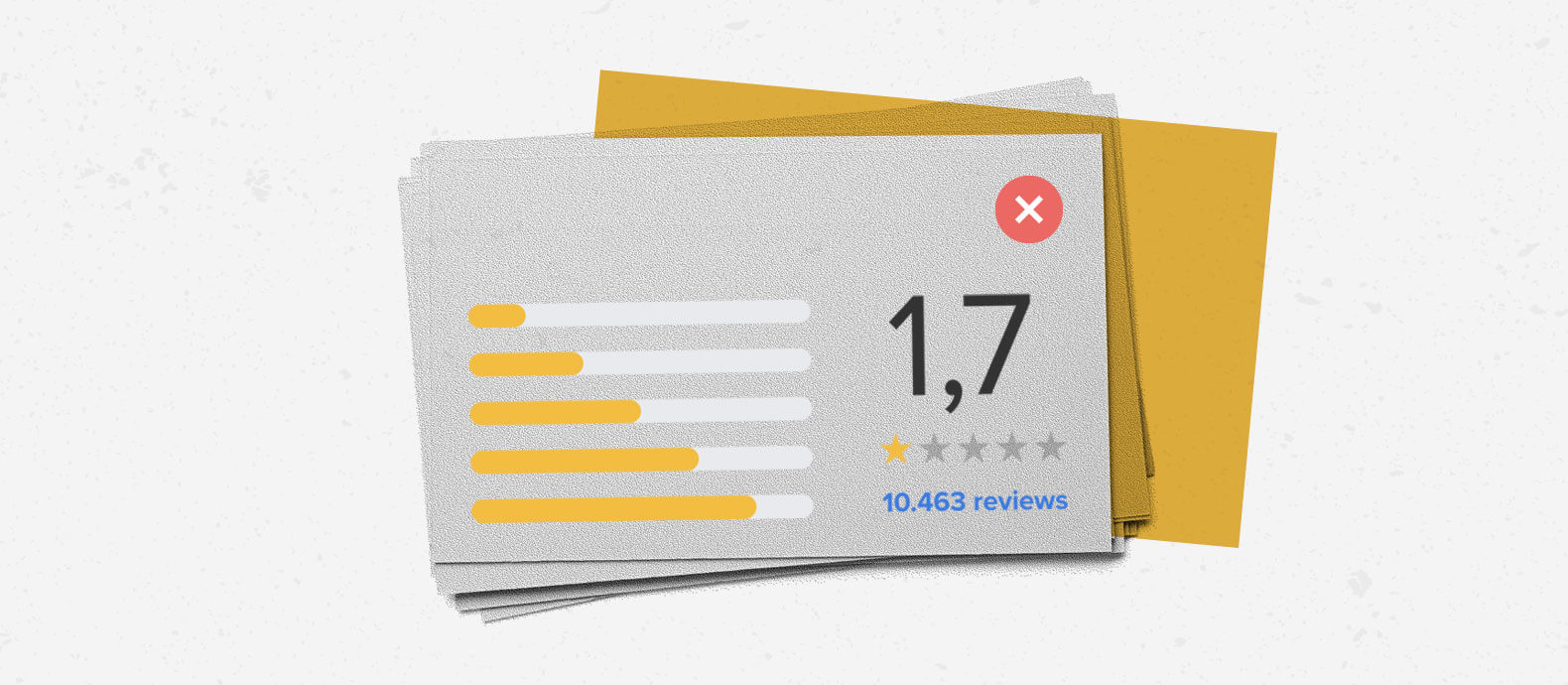With 89% of people now preferring not to use a business until they have read a review, and a staggering 91% of millennials trusting online reviews more than testimonies from their own friends and family, your company’s Google reviews have never been more important.
The damage that can be caused by irrelevant Google reviews is not inconsiderable, especially considering that they are integrated into the search engine, Google maps, and other platforms. Therefore, it should go without saying that knowing how to report and remove a Google review is absolutely essential.
How to take down a Google review
Unfortunately, unless you are the author, there is no simple way to take down a Google review. Instead, you have to flag the review as having violated Google’s prohibited and restricted content policy.
This policy is not just restricted to reviews but is standard across all content on all of Google’s platforms.
For content to violate this policy, it has to fall into one of five categories: civil discourse, deceptive content, mature content, regulated, dangerous or illegal content, and information quality.
Examples of reviews that violate Google’s policy
Civil discourse, including harassment, hate speech and sharing personal details.
- Example: a disgruntled ex-employee writes a restaurant review, in which he personally insults his ex-boss and shares his phone number.
Deceptive content, including impersonation and misrepresentation.
- Example: someone leaves a negative review of a hotel purporting to be a regular guest, but in fact, they work for a rival chain.
Mature content.
- Example: anything that is sexually explicit, obscene, violent, or gory.
Regulated, dangerous, and illegal content.
- Example: promotion of terrorism, compromising child safety, or containing illegal content.
Information quality, including advertising, repetitive or nonsense content, and off-topic reviews.
- Example: when leaving a review for a local business, the author posts a link to a rival company operating in the same field.
If you think that a review of your business falls under any of these categories, then you should flag it.
Flagging an inappropriate Google review
Step 1 – Sign in to your Google Business account.
Step 2 – Click on “reviews”.
Step 3 – Find the three dots in the top right-hand corner. Click on them, and you will be given the option “flag as inappropriate”, and that’s literally it. Google says that it can take them “several days” to assess a review, but if no action has been taken after three days, we would suggest following up.
Step 4 – Confirm the reason why you are reporting the review, and submit.
You can flag inappropriate Google reviews through your desktop, the Google Business app, or Google Maps.
What is Google’s process for dealing with fake reviews?
Once reported, Google will send you an email confirming that the review is under investigation.
Google already uses automated detection software which uses hundreds of cues to detect abusive behavior, such as a shift of review patterns on a business and implausible behavior patterns by reviewers. In conjunction with this, they also have a team of human moderators to complement their automatic detection systems.
When should you report a Google review?
All businesses get bad reviews sometimes. Maybe the staff or the receiver was having a bad day, or in the case of a restaurant, the food just wasn’t to somebody’s taste. These things happen. In fact, people tend to trust businesses with an overall Google star rating of 4.9 rather than a perfect 5, presumably because it is proof that the reviews are genuine. In the real world, nobody gets five stars every time, no matter how good their product or service is.
So an objective “bad” review is not a reason for flagging. However, if a review is libelous or if you suspect it to be fake, then this is definitely something that warrants further attention.
How to tell if a review is fraudulent
There are several steps you can take in order to try and identify whether the review is fraudulent or genuine:
Check the reviewer’s profile and their other reviews.
If their reviews are either five-star or one-star with no middle ground, then this is a big sign that they are paid to write fake reviews. Also, check the geographical location of their reviews. If they are spread around the country or even the globe, this is another big indicator that they are not genuine.
Read the reviews themselves.
Does the content mention specifics, or is it full of vague, generic criticism, such as “rude customer support”, “poor product quality”, or “this is a scam”? If so, this is a big hint that the reviewer may have been fooled by a scammer into believing they were purchasing directly from your brand.
Have a look at the time stamp on the reviews. If the reviewer has written a glut of reviews in a very short space of time, this is a massive red flag that the reviews themselves are fake or that there is a scam targeting your customers.

How to handle a surge in negative Google reviews
There may be times when a sudden wave of negative complaints arise and you can’t tell for sure if the reviews are fake or not. Even if you are quite sure a review is not genuine, there is no concrete guarantee that Google will remove it, and even if they do it can take a while. Therefore, it is important to know how to handle a negative review while it is still in the public domain, in order to minimize any potential damage to your company.
If a negative review looks to be genuine, then use it as an opportunity not only to show off your customer relations skills but to get to the bottom of what caused the sudden rise in negative reviews. While every business may choose to engage its customers differently, if you choose to respond to these reviews you can request additional information about the incident that lead up to their frustration.
If you suspect that the review is fake, then all of the above still applies. The main priority is asking for full details of their visit to your establishment, including which goods or services were ordered, what exactly was unsatisfactory, and of course the time and date. If they are unable to provide these with any degree of precision, this will confirm your suspicions that the review is not genuine.
What internal action should be taken?
If you are hit with a spike of bad reviews out of nowhere, then conducting an internal audit would be a sensible course of action. This will help to reasonably establish the veracity of the reviews. If they are fraudulent then it is clear that further action needs to be taken, but if they are genuine then this is also a cause for concern – and of course, an opportunity to improve your business.
If you notice a sudden surge in bad reviews, especially ones that accuse you of things that may seem untrue such as rude customer service or a substandard product, you may be a victim of an undetected business impersonation scam, such as fake websites or social media impersonation.
In such cases, upset customers, who have suffered at the hands of scammers purporting to be from your business, leave negative reviews, all while completely unaware that they were never actually dealing with your company.
How Red Points may be able to help if you have a sudden spike in negative Google reviews
Red Points is a Revenue Recovery solution that can help detect fraudsters who are impersonating your business and causing people to write negative reviews, which needlessly damage your reputation.
If you see a spike in negative reviews and customer complaints, especially if they appear to be completely baseless, this can often be an indicator that someone is impersonating your brand and using its good reputation for malicious purposes. This could include phishing scams and other forms of data theft, or even trying to pass off their counterfeit goods as your genuine product.
Through our smart, automated software, Red Points’ tools and teams help to ensure that businesses can recover revenue lost to bad actors.
How does our revenue recovery platform work?
- Targeting infringers – our bots crawl the entire web to identify counterfeits.
- Building a case – we collect all the data needed to start legal action.
- Getting compensation – together with our partners we shut down fraudulent accounts and recover your revenue through our revenue recovery program.
Once an infringement has been positively identified, Red Points does everything from start to finish, so you can get on with running your business.
- Monitoring and detecting
Manually checking for online impersonators is completely impractical for any growing business, given the volume of potential infringements online. Red Points’ Business Impersonation Removal software offers scalable impersonation detection and removal solutions that allow brands to retain revenue and focus on growth.
With bot-powered searches across the web, social media sites, and app stores, Red Points can identify scammers who might be impersonating your business. Our system monitors the surface web 24/7 for infringements, for constantly watching your brand and conducting keyword searches.
In addition to this, our platform leverages technology such as image recognition, machine learning, and automated keyword searches each of which we use to protect your brand and its revenue as much as possible.
- Validation and prioritization
Red Points creates a list of potential cases of infringement, tailored to your business. It is important to check this list carefully before enforcing any takedowns, as it gives your complete control over who you want to take action against. It is important to note that enforcing a takedown is a legal process, so it is therefore vital to correctly identify any fraudulent content before initiating takedown proceedings.
Additionally, by creating a High-Risk shortlist, you can prioritize which cases require urgent attention, and visual cards allow you to view all potential infringements in one place, without running the risk of missing anything.
- Enforcing
As soon as you spot a potential infringement that you want to be taken down, you can set Red Points’ removal process in motion, meaning that any infringement which could damage your business will be offline as possible.
At Red Points, we handle the complete takedown process from start to finish. Whether a fake app, profile, website, or any other malicious content is infringing on your intellectual property, we don’t stop until the takedown process is complete and the offending content has been removed.
As well as this, our data-driven approach will provide you with metrics to track the success of your anti-impersonation efforts, and data that can be used to protect your brand in the future.
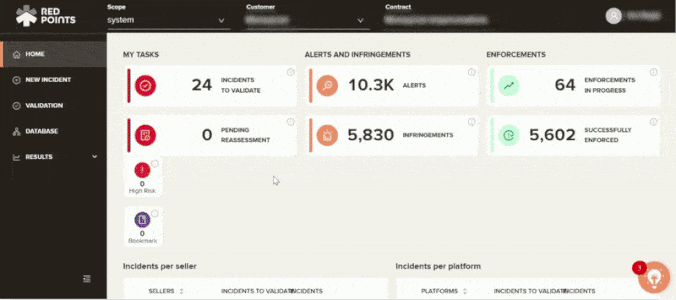
- Custom reports
Red Points’ custom reports contain lots of essential data in connection with fraudulent incidents. You can request information that is not shown on the dashboard, ranging from the number of enforcements by infringement type to the average number of days elapsed between notification and takedown. This allows you to see exactly what type of threats your business is facing, and how quickly the threats are being dealt with. Is your business being hit by scammers who have impersonated your website or profiles to steal your customers’ personal information? Is phishing an issue? Or are you being targeted by counterfeiters? All of this information will help you to assess the risks and threats facing your business, and counteract them in a timely manner.
- Economic impact report
At Red Points, we are very aware of how a slew of negative reviews can have a very serious negative impact on your business. Companies just like yours lose revenue every day that is rightfully theirs to scammers, infringers, and fraudsters. We are passionate about helping our clients recover their revenue from these bad actors.
Our economic impact reports reveal the return of revenue based on total enforcements, the enforced economic value, and the number of incidents per asset. It is vital for any business to be able to quantify this impact. As soon as any takedown requests have been sent, you will have full access to information about the revenue you have recovered. Our performance dashboards enable you to discover the overall economic benefit you are gaining from using our solutions.
What’s next?
With Google reviews having such an influence on the choices that consumers make, protecting your brand’s identity has never been so important. At Red Points, we offer sophisticated Business Impersonation Removal software to ensure that you can find, track, and report sites that are stealing your identity.
If you want to protect your brand identity online through an automated solution, request a demo today.
